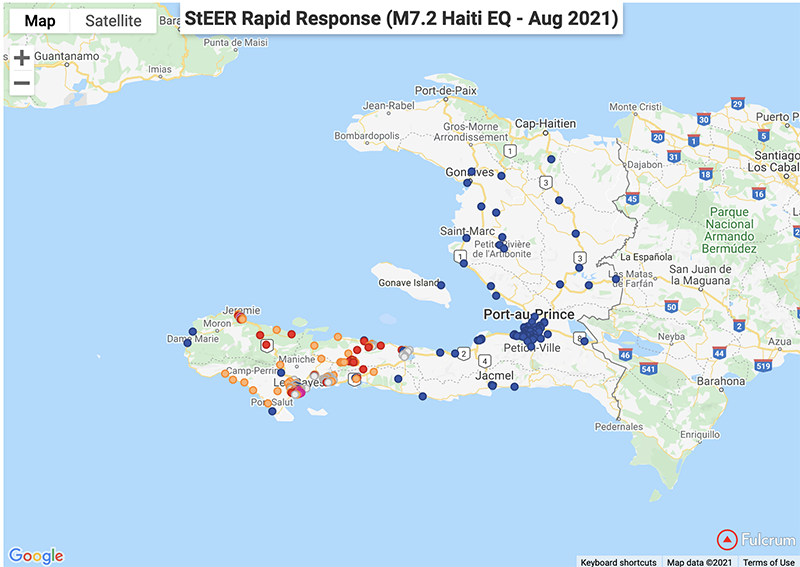StEER Team Collecting Damage Data from Haitian EQ
Published on August 31, 2021
On August 14, a devastating 7.2M earthquake struck Haiti, about 90 miles west of Port-au-Prince. More than 130,000 buildings were damaged or destroyed, and more than 2,000 people were killed. To date, it is the deadliest earthquake and deadliest natural disaster of 2021 and the worst disaster to strike Haiti since the 2010 earthquake.
Currently, The Structural Engineering Extreme Events Reconnaissance network, StEER, is remotely assessing the massive damage in Haiti, which was struck by a 7.2M earthquake on August 14. StEER immediately activated its VAST (Virtual Assessment Structural Team) to begin compiling information to author its Virtual Preliminary Virtual Reconnaissance Report (PVRR).
Due to ongoing security concerns, a FAST (Field Assessment Structural Team) will not be activated for this event. Instead, photographs and audio descriptions of buildings are being collected by local community members, who have themselves been impacted by the disaster, via the Fulcrum mobile application using a special app in Creole. Those records are then being assessed virtually by engineers to complete the rapid performance assessment. These Haitian data collectors are currently working in Sud Department and scouting GrandAnse Department, working closely with GeoHazards International (GHI) whose data collectors are operating under the same umbrella in Nippes Department. StEER is also collaborating with the Learning from Earthquakes program at the Earthquake Engineering Research Institute (EERI) for the virtual assessment process.
A real-time map of the data is available on the StEER event response page. This page also includes information for those wishing to support the virtual assessment process by reviewing data collected by community members and assist with the authorship of the Early Access Reconnaissance Report (EARR) summarizing observations from this unique response model. The site also includes instructions on how to access, configure and use the Fulcrum App to collect data in Haiti. StEER has made this platform available to any groups assisting with the response to this earthquake. Those with questions about the response are encouraged to direct message Tracy Kijewski-Correa (@tkijewsk).
The StEER assessment teams, led by Tracy Kijewski-Correa, fall under the NHERI CONVERGE umbrella. For ongoing updates, visit the StEER website.








